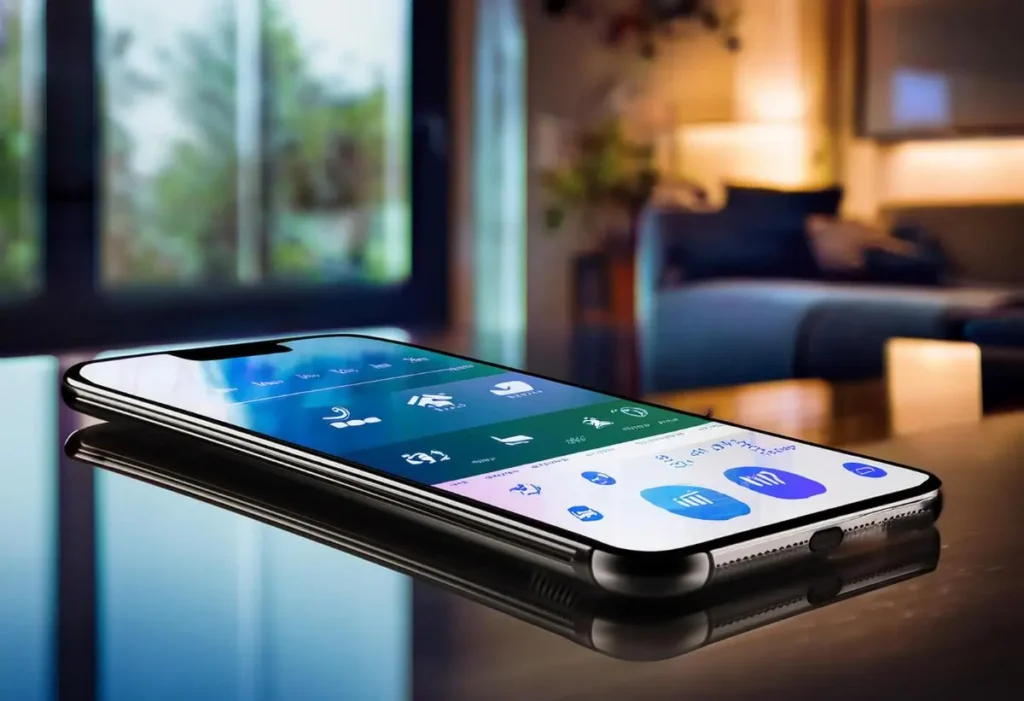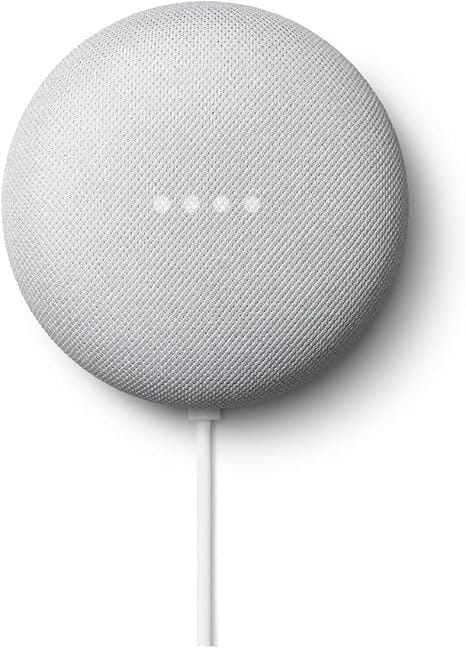We may earn an affiliate commission if you buy through links on our site.
Setting up a smart home can feel overwhelming. With so many options, features, and device integrations, where do you even start?
The fitting starter kit can make a world of difference. Transform your home into a space where you can turn on lights with a simple voice command, monitor security systems from anywhere, and automate your morning coffee.
This guide will walk you through everything you need to know to confidently choose the perfect smart home automation starter kit, including must-have features, top options, and tips for seamless integration.
What is a Smart Home Automation Starter Kit?
A smart home automation starter kit is a bundle that provides the essential components to turn your regular home into an interconnected, automated living space. Usually, it includes a smart hub or controller and essential smart devices like smart lights, security cameras, or smart thermostats. With a starter kit, you can get a feel for home automation while allowing for future expansions.
Key Features of a Starter Kit:
- Simplified Integration: All devices within a kit are compatible and easy to set up.
- Cost-Effective: Kits are more affordable than purchasing each device individually.
- Expandable: You can add more devices over time as your needs evolve.
Starter kits provide a simple way for beginners to explore the benefits of home automation systems. They lay the groundwork for a more energy-efficient, secure, and convenient lifestyle.
Components of a Smart Home Automation Starter Kit

Each smart home kit is unique, but most will contain a few essential items. Here’s a look at what you can expect:
1. Smart Hub/Controller
The smart hub is the command center of your home automation system, connecting devices and enabling control. Popular hubs include Amazon Echo, Google Nest Hub, and Apple HomeKit. A reliable hub should:
- Support Multiple Protocols: Look for compatibility with Zigbee, Z-Wave, or Wi-Fi to ensure a wide range of device support.
- Enable Voice Control: Most hubs work with Alexa, Google Assistant, or Siri.
- Offer Remote Access: Hubs with smartphone apps allow you to monitor and control devices on the go.
Explore our guide to choosing the best smart home hub for more information.
2. Smart Lighting Solutions
Smart lighting offers remote control, scheduling, and energy-saving features. Lights like Philips Hue bulbs are famous for setting up dimmable, customizable lighting. Innovative lighting solutions are perfect for creating mood lighting or enhancing home security. Check out the best smart lighting options.
Fun Fact: A smart lighting system can reduce lighting energy costs by up to 50%!
3. Smart Thermostats
A smart thermostat like Nest or Ecobee learns your temperature preferences and helps optimize energy use. By adjusting based on your schedule, these devices help reduce energy bills while maintaining comfort. Learn more about how smart thermostats work to save energy.
4. Automated Home Security Devices
Security is one of the top reasons people invest in smart home systems. Starter kits often include smart locks, security cameras, and motion detectors to keep your home secure. These devices let you monitor your home remotely and receive alerts when something unusual occurs. See our guide to smart security options.
5. Voice Assistants
Many starter kits are compatible with voice assistants like Alexa, Google Assistant, and Siri. This feature lets you control your smart home hands-free and set up device routines.
Benefits of a Smart Home Automation Starter Kit

A home automation system can bring numerous benefits, from convenience to cost savings.
1. Energy Efficiency
Smart thermostats, lighting, and other energy-saving devices contribute to a more energy-efficient home, reducing waste and monthly bills. Learn more about smart energy management here.
2. Enhanced Security
Smart security devices, including cameras and locks, allow 24/7 monitoring and remote control of your home’s entry points. You can receive alerts when someone is at the door or if motion is detected.
3. Convenience and Automation
Voice assistants and automation routines can simplify everyday tasks. Imagine saying, “Goodnight,” and having all your lights dim, the doors lock, and the thermostat adjust to an ideal temperature.
Factors to Consider When Choosing a Starter Kit
Choosing the fitting starter kit depends on several factors. Here’s what you need to keep in mind:
Compatibility
Ensure that your hub and devices work together. Compatibility with Zigbee, Z-Wave, or Wi-Fi protocols allows for greater flexibility. Find The Best Smart Home hubs.
Ease of Setup
Look for “plug-and-play” devices which are user-friendly and easy to install. Samsung SmartThings, for instance, offers a hassle-free setup that is ideal for beginners.
Expandability
Choosing a starter kit that allows you to add new devices later is wise. You might start with smart lighting and security but eventually expand to smart kitchen appliances or gardening gadgets. Explore budget-friendly expansion ideas here.
Cost and Budget
Consider your budget when selecting a starter kit. While high-quality kits are often worth the investment, you can find affordable options that work well for beginners.
Top Smart Home Automation Starter Kits in 2024
Here are some of the best starter kits available on the market today, each with unique benefits:
1. Amazon Echo Starter Kit
This kit integrates well with Alexa and offers easy control of compatible devices. It’s user-friendly and ideal for voice-controlled tasks.
2. Google Nest Starter Kit
Google’s kit suits users who invest in the Google ecosystem. With robust security features and seamless integration, it has become a favorite among Android users.
3. Apple HomeKit
For those in the Apple ecosystem, HomeKit provides reliable and secure options. Although it works primarily with Apple devices, it ensures smooth and stable operation with Siri integration.
How to Set Up Your Smart Home Automation Starter Kit
Setting up your starter kit is easy with these steps:
Step-by-Step Setup Guide
- Install the Hub: Connect your hub to power and Wi-Fi. Download the associated app to start managing your devices.
- Add Devices: Use the app to connect your devices, such as lights, cameras, and thermostats.
- Customize Settings: Adjust device settings, set schedules, and enable voice controls.
- Create Routines: Set up routines, like “Good Morning” or “Goodnight,” to easily control multiple devices with one command.
For more details, check out our complete Smart Home Setup guide.
Security Tips for Your Smart Home Starter Kit
Security is crucial when setting up a smart home automation system. Here are some tips to keep your devices safe:
1. Use Strong Passwords
Make sure to use unique, complex passwords for each device. Avoid using the same password across different devices.
2. Secure Your Wi-Fi Network
A strong, encrypted Wi-Fi password is essential for securing your smart home. You can also consider a guest network for added security.
3. Regularly Update Software
Firmware updates play a crucial role in fixing security vulnerabilities. Always set your devices to auto-update or regularly check for updates to keep them secure. Learn more about smart home security here.
Expanding Your Smart Home: What’s Next After the Starter Kit?
You may want to expand once you’re comfortable with your starter kit. Here’s how:
Add New Devices
Consider adding smart kitchen appliances, smart garden irrigation, or health monitoring devices to your home ecosystem. Check out smart kitchen ideas.
Create Advanced Routines
Take automation to the next level by setting up routines that work with multiple devices. For instance, you can program a “Movie Night” routine that dims the lights, adjusts the thermostat, and turns on the TV.
Did You Know? Advanced automation can save up to 30% on energy costs by only powering devices when needed!
Consider Smart Energy Management
If energy savings are a priority, explore smart home energy management systems. These systems allow you to monitor and control your energy usage, making your home more eco-friendly.
Integrate with Voice-Controlled Cooking
Voice-controlled devices are increasingly popular for hands-free convenience. Explore voice-controlled cooking options for seamless kitchen automation.
Conclusion
A smart home automation starter kit is a fantastic way to experience the power of automation without diving too deep at once. You’ll enjoy increased security, energy savings, and convenience by starting with a hub and a few essential devices. And as you become more comfortable, you can expand and add more advanced features that make your home truly smart.
By following this guide, you’ll be well on your way to setting up a connected, efficient, and intelligent home that meets your needs and grows with you.
This comprehensive guide should help you begin your smart home journey with options and tips for expansion. For more insights, check out additional resources on NGASSI’s Tech Hub!
Frequently Asked Questions
1. What Are the Best Starter Kits for Beginners?
Popular options include the Grenton, LifeSmart, and Control4 kits due to their user-friendly interfaces and scalable designs.
2. Is It Expensive to Start with Smart Home Automation?
The cost varies depending on the kit and brand. Consider Amazon’s affordable smart home solutions options for those on a budget.
3. Can I Install a Starter Kit Myself?
Many kits simplify DIY installation, and LifeSmart kits provide tool-free setup processes tailored for beginners. If you need further assistance or additional rewrites, just let me know!
4. What is a good starter kit for someone getting into smart homes/home automation?
A great starter kit for beginners should include essential components like a smart hub (for controlling devices), smart lights, and a smart thermostat. The Amazon Echo Starter Kit, Google Nest Hub, and Apple HomeKit are popular options because they’re user-friendly, versatile, and compatible with many smart devices. Each offers unique benefits for beginners—Amazon Echo works well with Alexa for voice control, Google Nest integrates seamlessly with Google Assistant, and Apple HomeKit provides excellent security and integration for Apple users.
5. What is the first thing to buy for a smart home?
The first purchase for a smart home is usually a smart hub or smart speaker like an Amazon Echo or Google Nest Hub. These devices act as the control center, allowing you to manage all other smart devices in one place. Starting with a smart hub will enable you to add compatible devices like smart lights, thermostats, and security cameras as you go.
6. What is needed to start a smart home?
To start a smart home, you’ll need a smart hub (or a device that can serve as a hub), a few smart devices (like lights, locks, or thermostats), and a Wi-Fi connection. Some people also start with a smart speaker or voice assistant (e.g., Amazon Alexa, Google Assistant) for voice control. With these basics, you can automate simple routines and manage your home remotely using a smartphone app.
7. What is a smart home starter pack?
A smart home starter pack is a bundle that includes essential devices to help beginners set up and automate their homes. Typically, it consists of a smart hub, smart lights, and sometimes security devices or thermostats. Starter packs simplify installation and ensure compatibility with various devices, making them ideal for newcomers to smart home Technology.




